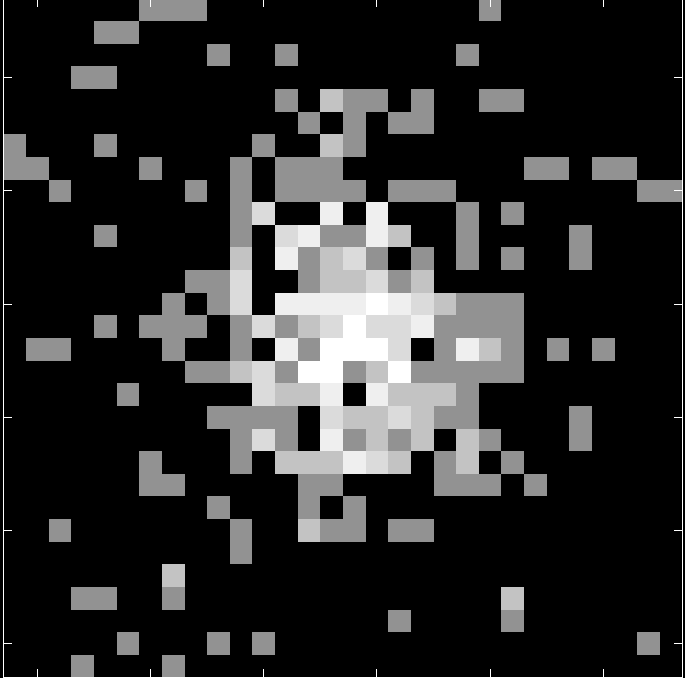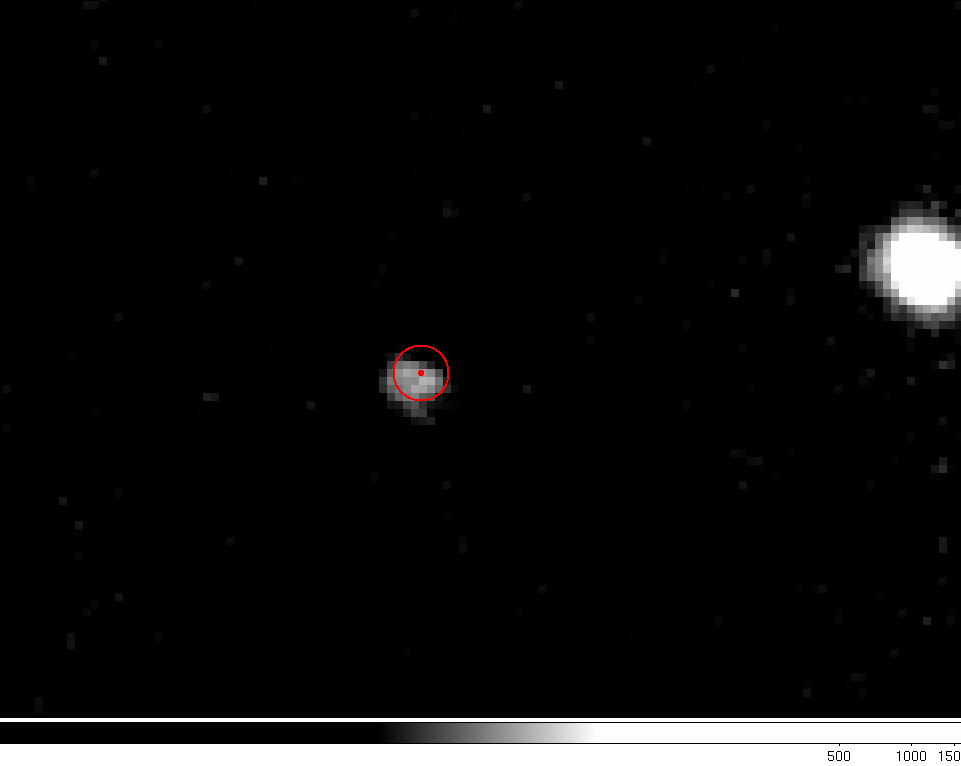Positions in space.
One of the challenges in astronomy is saying where something is. Like longitude and latitude on Earth, there is a standard co-ordinate system in space (which I won't detail here, see Sky & Telescope's guide to celestial co-ordinates). But unlike on Earth, one can't say exactly* where something is. On Earth, you can go to a place to confirm its position, or use satellite positioning to triangulate a position for example. In space these methods don't work.

An X-ray-emitting object as seen by Swift. Image Credit: Phil Evans
To picture the problem imagine that you have a photograph of a field, with a small flower somewhere in the picture. You want to tell a friend, who's visiting the field, precisely where to look to see the flower. To do this, you'd need to know exactly where in the photograph the flower was, and the exact direction the camera was pointing. The same is true in astronomy. We have to known out exactly where in the image the object we're interested in is, and the pointing direction of the telescope.
This is not necessarily as easy as you may think. First, working out where in the image the object is is uncertain. In most telescopes a star doesn't appear as a point, but a bit of a blob: see the X-ray image from Swift to the left, and we have to work out where the centre of that blob is. This is actually easier with a blob than with a single point, because if a star appeared literally as a dot, you could only tell which pixel on your detector it was in; with a blob, you can measure much more accurately than that, but still not perfectly. So there's some uncertainty on where the object is. Then we have to work out where the telescope was pointing. This is normally done by looking at the other stars that we can see and matching them to a catalogue of known positions. It's a bit like printing your telescope's field of view onto a transparency, and then lying that on a star chart and twisting it until all the stars in your picture match those in the chart.
Unfortunately, this isn't the end of it. The above techniques are not perfect, and they won't give an exact answer. For the flower in a field example the fact that your answer isn't perfect doesn't matter. Provided it's fairly close someone else looking there could spot the flower. In space though, it's a different matter. If you take a long exposure (called a deep image) that lets you detect really faint objects, you will find loads of them, many of which probably haven't been catalogued before, and several may be in the right sort of region. So how do you know which one is the one you're looking for?
The answer is that, although positions are not perfect, we can calculate how imperfect that are, and tell people. So instead of saying "the GRB is here," we say, "the GRB is in this circle," or more precisely, we say, "we are 90% sure that the GRB is in this circle." The image belows shows an image of the area around a new GRB, taken with the Swift UV/optical telescope. The bright splodge towards the centre is an unidentified object. The red dot shows the position that the X-ray Telescope on Swift said the GRB was. It's within the splodge, but not at the centre, so from this alone you couldn't say if the unidentified source is the GRB. But the red circle shows the uncertainty in the position. The X-ray Telescope actually believes that the GRB is inside this circle, not necessarily at the position of the dot. This circle nicely encompasses the unidentified source, making it likely that this is the GRB.

Image Credit: Phil Evans
* OK, even on Earth you can't say exactly where something is because of the Uncertainty Principle, but you know what I mean.